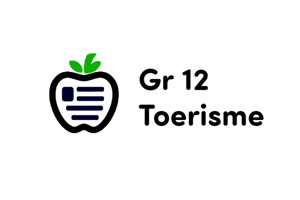Podcast
Questions and Answers
What characterizes a crisis as defined in the content?
What characterizes a crisis as defined in the content?
- An event that ensures business continuity
- A situation that only affects natural resources
- A time of intense uncertainty and unpredictability (correct)
- A period of clear control over all systems
Which of the following is NOT considered a crisis event beyond the control of management?
Which of the following is NOT considered a crisis event beyond the control of management?
- Epidemics
- Acts of terrorism
- Business collapse due to mismanagement (correct)
- Natural disasters
What does the reduction phase in the Four R Concept entail?
What does the reduction phase in the Four R Concept entail?
- Complete restoration of normal operations
- Full recovery to pre-crisis conditions
- Assessment of damage and putting recovery plans in place (correct)
- Immediate termination of business activities
Which of the following actions is part of the crisis management process according to the Four R Concept?
Which of the following actions is part of the crisis management process according to the Four R Concept?
Which type of crisis is highlighted as resulting from a failure of management actions?
Which type of crisis is highlighted as resulting from a failure of management actions?
What is the first step in crisis mitigation as described in the content?
What is the first step in crisis mitigation as described in the content?
What is a key result of the reduction phase in tourism crisis management?
What is a key result of the reduction phase in tourism crisis management?
Which of the following best defines a tourism crisis?
Which of the following best defines a tourism crisis?
What is the first stage of the risk management process?
What is the first stage of the risk management process?
What common method is used to identify risks within an organization?
What common method is used to identify risks within an organization?
In risk analysis, what two aspects are typically compared?
In risk analysis, what two aspects are typically compared?
What does risk control primarily focus on?
What does risk control primarily focus on?
What would be classified as exposure avoidance in risk control?
What would be classified as exposure avoidance in risk control?
How can risk analysis be conducted?
How can risk analysis be conducted?
What triggers the need for risk control?
What triggers the need for risk control?
Which of the following would NOT typically be involved in risk identification?
Which of the following would NOT typically be involved in risk identification?
What is a critical element in responding to a crisis event?
What is a critical element in responding to a crisis event?
Which of the following is NOT included in a well-prepared contingency plan?
Which of the following is NOT included in a well-prepared contingency plan?
What does the 'recovery' phase of a crisis management plan prioritize?
What does the 'recovery' phase of a crisis management plan prioritize?
Why is staging drills or simulations important in crisis management?
Why is staging drills or simulations important in crisis management?
What role does a SWOT analysis play in crisis preparedness?
What role does a SWOT analysis play in crisis preparedness?
What is the focus during the critical first hour of a crisis event?
What is the focus during the critical first hour of a crisis event?
What should contingency plans include regarding staff roles?
What should contingency plans include regarding staff roles?
Which of the following is a potential misconception about recovery after a crisis?
Which of the following is a potential misconception about recovery after a crisis?
What is the primary focus of the tourism risk management process?
What is the primary focus of the tourism risk management process?
How do value-added incentives compare to price discounting according to the content?
How do value-added incentives compare to price discounting according to the content?
What can poor understanding and management of risks lead to in the tourism sector?
What can poor understanding and management of risks lead to in the tourism sector?
What is one of the roles of wholesalers in risk management?
What is one of the roles of wholesalers in risk management?
Why do clients often choose to travel with tour operators instead of independently?
Why do clients often choose to travel with tour operators instead of independently?
What aspect of risk management models is highlighted in the content?
What aspect of risk management models is highlighted in the content?
What does the content say about the twin role of wholesalers?
What does the content say about the twin role of wholesalers?
What does effective risk management prevent within the tourism industry?
What does effective risk management prevent within the tourism industry?
What is an example of eliminating hazardous activities in risk management?
What is an example of eliminating hazardous activities in risk management?
Which of the following best describes loss reduction in risk management?
Which of the following best describes loss reduction in risk management?
What is the purpose of risk transfer in tourism risk management?
What is the purpose of risk transfer in tourism risk management?
What does risk retention imply for a company?
What does risk retention imply for a company?
What might be a reason for a company to choose self-insurance?
What might be a reason for a company to choose self-insurance?
How can risks be transferred through contracts in tourism?
How can risks be transferred through contracts in tourism?
Which of these would NOT be a method of risk treatment?
Which of these would NOT be a method of risk treatment?
Why might a company decide against transferring certain risks?
Why might a company decide against transferring certain risks?
Flashcards
Tourism Crisis
Tourism Crisis
An event or set of circumstances severely compromising the marketability and reputation of a tourism business or destination.
Crisis Events (Uncontrollable)
Crisis Events (Uncontrollable)
Events like natural disasters, wars, terrorism, political unrest, epidemics, and economic downturns that impact tourism.
Crisis Events (Controllable)
Crisis Events (Controllable)
Events due to poor management, strategy, financials, safety, or lack of contingency plans. Even equipment failure.
Four R Concept
Four R Concept
Signup and view all the flashcards
Reduction (Crisis Management)
Reduction (Crisis Management)
Signup and view all the flashcards
Risk Management (Tourism)
Risk Management (Tourism)
Signup and view all the flashcards
Contingency Planning
Contingency Planning
Signup and view all the flashcards
Recovery (Crisis Management)
Recovery (Crisis Management)
Signup and view all the flashcards
Contingency Plan
Contingency Plan
Signup and view all the flashcards
Crisis Event Response
Crisis Event Response
Signup and view all the flashcards
Recovery Alliance
Recovery Alliance
Signup and view all the flashcards
Crisis Communication
Crisis Communication
Signup and view all the flashcards
Risk Assessment
Risk Assessment
Signup and view all the flashcards
Economic Sustainability
Economic Sustainability
Signup and view all the flashcards
Emergency Contacts
Emergency Contacts
Signup and view all the flashcards
Crisis Simulation
Crisis Simulation
Signup and view all the flashcards
Value-Added Incentives
Value-Added Incentives
Signup and view all the flashcards
Tourism Risk Management
Tourism Risk Management
Signup and view all the flashcards
Risk Management Process
Risk Management Process
Signup and view all the flashcards
Crisis Management
Crisis Management
Signup and view all the flashcards
Disaster Management
Disaster Management
Signup and view all the flashcards
Wholesale Tour Operators
Wholesale Tour Operators
Signup and view all the flashcards
Risk Management Models
Risk Management Models
Signup and view all the flashcards
Risk Management Stages
Risk Management Stages
Signup and view all the flashcards
Risk Identification
Risk Identification
Signup and view all the flashcards
Risk Analysis
Risk Analysis
Signup and view all the flashcards
Risk Control
Risk Control
Signup and view all the flashcards
Exposure Avoidance
Exposure Avoidance
Signup and view all the flashcards
Loss Reduction
Loss Reduction
Signup and view all the flashcards
Unacceptable Risk
Unacceptable Risk
Signup and view all the flashcards
Risk Treatment
Risk Treatment
Signup and view all the flashcards
Risk Transfer
Risk Transfer
Signup and view all the flashcards
Insurance
Insurance
Signup and view all the flashcards
Risk Retention
Risk Retention
Signup and view all the flashcards
Waiver
Waiver
Signup and view all the flashcards
Self-Insurance
Self-Insurance
Signup and view all the flashcards
Deductible
Deductible
Signup and view all the flashcards
Study Notes
Tourism Risk Mitigation
- Crises are periods of intense uncertainty, characterized by unpredictability and loss of control over key functions.
- A tourism crisis, from a wholesaler's perspective, is an event severely compromising a tourism business's marketability and reputation.
- Two broad categories of tourism-related crises impact businesses: events beyond management control (natural disasters, war, terrorism, political instability, crimes, epidemics, economic downturns) and events resulting from management failure (business collapse, inadequate management, fraud, data loss, facility damage).
Tourism Crisis Management
- PATA (Pacific Asia Travel Association) developed a Four R Concept for crisis management: Reduction, Readiness/Risk Preparedness, Response, and Recovery.
Reduction
- Risk management is crucial.
- SWOT analysis identifies Strengths, Weaknesses, Opportunities, and Threats.
- Contingency and continuity plans minimize crisis impact.
- Reduction is the initial stage after a crisis, where services may be limited but businesses start resuming operations.
Readiness/Risk Preparedness
- Contingency plans deal with likely risks and threats.
- Drills and simulations are essential for training.
- Plans should include threat/risk assessment, staff/management assignment, training on roles, emergency contacts, scenario exercises for initial crisis management, detailed crisis process scenarios, spokesperson designation, SWOT analysis, backup procedures, and personnel.
Response
- Speed is crucial in responding.
- Stakeholders and media need to be informed quickly.
- Adequate communication is important.
Recovery
- Recovery involves economic, social, and environmental sustainability.
- Incentive-based discounts, value-added incentives, and low-cost methods are effective tools for recovery.
Studying That Suits You
Use AI to generate personalized quizzes and flashcards to suit your learning preferences.




